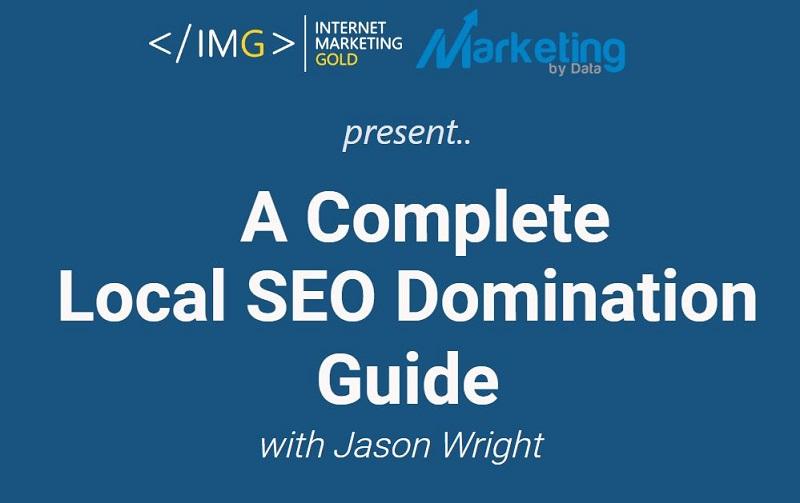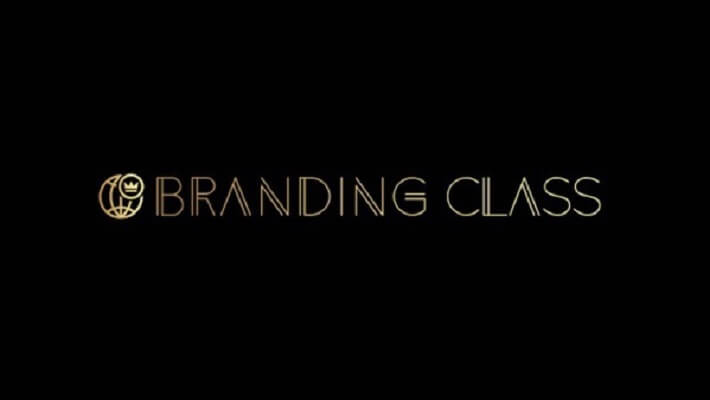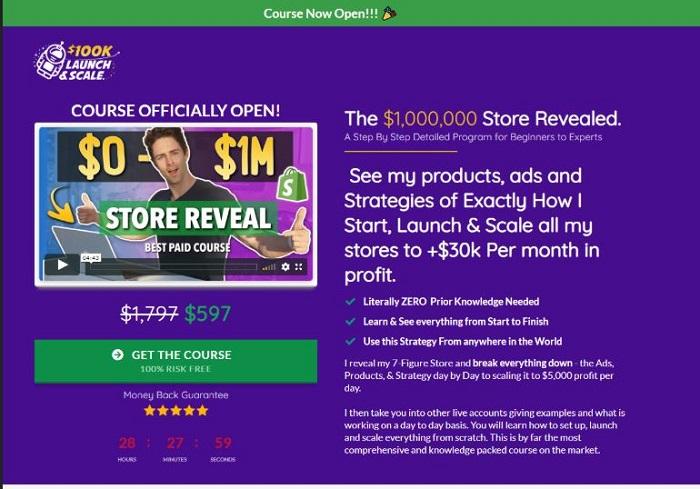[GroupBuy] The Ad Creative Course – Fraser Cottrell
$895.00 $269.00
- Delivery: You Will Receive A Receipt With Download Link Through Email.
- If you need more proof ofcourse, feel free to chat with me!

Description
Are you ready to transform your advertising efforts and drive unprecedented revenue growth? This article dives deep into the world of ad design courses, exploring the essential skills, strategies, and resources you need to create high-performing advertisements that captivate audiences and convert them into loyal customers. We’ll analyze a specific course, “The Ad Creative Course,” and explore the nuances of ad classes and ad courses to help you find the best path to ad design mastery.
Ad Design Course
In today’s hyper-competitive digital landscape, the effectiveness of an advertisement hinges not just on what you say, but how you say it. This is where ad design courses come into play. They offer a structured curriculum to equip individuals and teams with the skills to elevate their advertising from mere noise to compelling narratives that resonate with their target audience.

Mastering Visual Communication
Visual communication forms the heart and soul of effective ad design. It encompasses everything from the strategic use of color palettes and typography to the selection of impactful imagery and the overall layout of an ad. An effective ad design course should delve deep into these elements, teaching students how to harness their power to convey meaning and evoke emotion.
Think about the iconic Apple ads. They’re rarely cluttered with excessive text or complex graphics. Instead, they often feature clean, minimalist designs that emphasize the product itself, leaving a lasting impression on the viewer. This approach requires a deep understanding of visual hierarchy, balance, and the psychology of perception.
A good ad design course will not only teach you the theoretical principles of visual communication, but also provide practical exercises to hone your skills. This includes using real-world examples and case studies to illustrate how different design choices affect audience engagement and conversion rates. Furthermore, the course should cover the latest design trends and technologies, ensuring that graduates are equipped with the most up-to-date knowledge and skills.
For example, the rise of motion graphics and interactive elements in advertising demands that designers learn how to incorporate these features seamlessly into their work. A comprehensive course should address these trends and provide guidance on how to use them effectively.
The Psychology of Persuasion in Ad Design
Beyond aesthetics, great ad design leverages the principles of psychology to influence consumer behavior. Understanding concepts like cognitive biases, emotional triggers, and the power of storytelling is crucial for creating ads that truly resonate with your audience. This understanding is essential for the ad creative course
An ad design course that incorporates psychology will teach you how to craft persuasive messages that tap into people’s desires, needs, and fears. This involves learning how to frame your product or service as a solution to their problems, and how to create a sense of urgency or scarcity to encourage immediate action.
Consider the use of social proof in advertising. Showing that others have benefited from a product or service can significantly increase its perceived value and credibility. This is why testimonials, reviews, and case studies are often prominently featured in ads.
A good ad design course will provide you with the tools to analyze your target audience and understand their motivations. This includes learning how to conduct market research and create buyer personas, which are fictional representations of your ideal customers. By understanding your audience intimately, you can tailor your ad design to their specific needs and preferences.
Remember, persuasive ad design is not about manipulation or trickery. It’s about genuinely connecting with your audience and demonstrating how your product or service can improve their lives. A strong ethical foundation is crucial for ensuring that your advertising efforts are both effective and responsible.
Ad Design Software and Tools
Mastery of industry-standard software is crucial for any aspiring ad designer. An ad design course should provide hands-on training in programs like Adobe Photoshop, Illustrator, and InDesign, as well as other relevant tools for video editing, animation, and interactive design and creative suites used by professional advertising agencies.
Photoshop is indispensable for image editing and manipulation, allowing you to create stunning visuals and enhance the appearance of your ads. Illustrator is ideal for creating vector graphics, logos, and illustrations that can be scaled to any size without losing quality. And InDesign is essential for laying out complex advertisements with multiple elements, ensuring that everything is perfectly aligned and visually appealing.
In addition to these core programs, an ad design course should also introduce you to other tools that can help you streamline your workflow and enhance your creativity. This might include software for creating mockups and prototypes, tools for managing your design projects, and platforms for collaborating with other designers.
Furthermore, the course might provide guidance on how to use online resources and libraries to find stock photos, fonts, and other design elements that can save you time and effort. However, it’s important to emphasize the importance of using these resources ethically and respecting copyright laws.
The key is not just to learn how to use the software, but also to understand how to apply it creatively to solve design problems. A good ad design course will challenge you to think critically and experiment with different techniques to achieve your desired results.
Ad Classes
Ad classes offer a more focused and often shorter-term approach to learning specific aspects of advertising. Unlike comprehensive ad design courses, ad classes typically delve into specific skills, platforms, or strategies, providing targeted knowledge for individuals seeking to enhance their expertise in particular areas.
Platform-Specific Ad Training
With the ever-evolving digital landscape, mastering individual advertising platforms like Google Ads, Facebook Ads Manager, and LinkedIn Ads is crucial for achieving success. Ad classes specializing in these platforms provide in-depth knowledge of their unique features, targeting options, and optimization strategies.
Facebook Ads Manager, for example, is notoriously complex. An ad class dedicated to Facebook Ads would cover topics such as audience targeting, ad creative best practices, A/B testing, and conversion tracking. It would also delve into the platform’s advanced features, such as custom audiences, lookalike audiences, and retargeting campaigns.
Similarly, a Google Ads ad class would focus on keyword research, ad copy writing, bidding strategies, and Quality Score optimization. It would also cover advanced topics such as remarketing, dynamic search ads, and location targeting.
The advantage of these platform-specific ad classes is that they allow you to quickly gain expertise in the tools and techniques that are most relevant to your specific advertising goals. They are often taught by industry experts who have extensive experience using these platforms to generate real-world results.
However, it’s important to remember that platform-specific ad classes are just one piece of the puzzle. To truly succeed in advertising, you also need a strong understanding of fundamental concepts such as marketing strategy, consumer psychology, and creative design.
Specialization in Ad Tech and Analytics
The world of advertising is increasingly driven by data. Ad classes that focus on ad tech and analytics equip you with the skills to track, measure, and analyze the performance of your advertising campaigns, allowing you to make data-driven decisions that maximize your ROI.
These ad classes might cover topics such as Google Analytics, Google Tag Manager, and data visualization tools like Tableau or Google Data Studio. They would teach you how to track key performance indicators (KPIs) such as website traffic, conversion rates, and cost per acquisition (CPA).
They would also delve into advanced analytics techniques such as cohort analysis, attribution modeling, and predictive analytics. These techniques allow you to gain deeper insights into customer behavior and identify opportunities for optimization.
For example, an ad class on attribution modeling would teach you how to determine which marketing channels are responsible for driving conversions. This information is crucial for allocating your advertising budget effectively.
Furthermore, specialization in ad tech and analytics can open up exciting career opportunities in fields such as data science, marketing analytics, and digital marketing. As businesses increasingly rely on data to make decisions, the demand for professionals with these skills is growing rapidly.
Niche Ad Skills
The world of advertising is vast and complex, encompassing a wide range of specialized skills. Niche ad classes offer the opportunity to develop expertise in specific areas, such as mobile advertising, video advertising, or email marketing.
Mobile advertising, for example, requires a different set of skills and strategies than traditional desktop advertising. An ad class on mobile advertising would cover topics such as mobile ad formats, app install campaigns, and location-based targeting.
Similarly, video advertising requires expertise in video production, script writing, and video editing. An ad class on video advertising would teach you how to create compelling video ads that capture attention and drive engagement.
Email marketing, on the other hand, requires skills in copywriting, email design, and list segmentation. An ad class on email marketing would teach you how to craft effective email campaigns that nurture leads and drive sales.
These niche ad classes are ideal for individuals who want to specialize in a particular area of advertising and become experts in their field. They can also be valuable for businesses that want to develop in-house expertise in specific marketing channels.
Ad Course
An ad course sits somewhere between a full-fledged ad design course and a focused ad class. They typically cover a broader range of topics than ad classes but are less intensive and time-consuming than the broader options. These courses are excellent for individuals looking for a well-rounded understanding of advertising without committing to years of study.
Blending Creativity with Strategy
The most effective advertising seamlessly blends creative artistry with strategic thinking. An effective ad course will guide you through the process of developing a comprehensive ad strategy that aligns with your business goals, target audience, and budget. It would also emphasize the importance of creativity in capturing attention, conveying your message, and driving engagement.
The course should cover topics such as market research, competitive analysis, and brand positioning. It would teach you how to identify your target audience, understand their needs and preferences, and craft messages that resonate with them. Also, there must be a comprehensive approach
It would also delve into the creative aspects of advertising, such as copywriting, visual design, and storytelling. It would teach you how to write compelling ad copy that grabs attention and persuades people to take action. It would also cover the principles of visual design, helping you create visually appealing ads that reinforce your message.
The key is to find a course that strikes a balance between these two aspects of advertising. A course that focuses solely on creativity without addressing strategy is likely to be ineffective. Similarly, a course that focuses solely on strategy without addressing creativity will lack the spark and energy needed to capture attention and drive engagement.
Instead, look for a course that emphasizes the importance of integrating creativity and strategy, showing you how to develop ad campaigns that are both effective and engaging.
Exploring Different Ad Formats and Channels
The advertising landscape is constantly evolving. An ad course should explore a variety of ad formats and channels, helping you understand their strengths and weaknesses and how to use them effectively.
This might include topics such as display advertising, search engine marketing (SEM), social media advertising, video advertising, and native advertising. It would also cover emerging ad formats such as augmented reality (AR) ads and virtual reality (VR) ads.
The course should teach you how to choose the right ad formats and channels for your specific advertising goals, target audience, and budget. It would also cover the best practices for creating effective ads in each format and channel.
For example, display advertising is often used for brand awareness, while SEM is typically used for driving leads and sales. Social media advertising is ideal for targeting specific demographics and interests, while video advertising is effective for telling stories and capturing attention.
By exploring different ad formats and channels, you can develop a well-rounded understanding of the advertising landscape and learn how to create integrated campaigns that maximize your reach and impact.
Understanding ROI and Budgeting
No matter how creative and engaging your ads are, they won’t be effective if they don’t generate a positive return on investment (ROI). An ad course should teach you how to track, measure, and analyze the performance of your advertising campaigns, allowing you to make data-driven decisions that maximize your ROI.
This might include topics such as conversion tracking, attribution modeling, and A/B testing. It would also cover budgeting techniques, helping you allocate your advertising budget effectively across different channels and campaigns.
The course should teach you how to calculate key metrics such as cost per acquisition (CPA), click-through rate (CTR), and return on ad spend (ROAS). It would also cover the importance of setting clear goals and objectives for your advertising campaigns, and how to measure your progress towards achieving those goals.
For example, if your goal is to generate leads, you would track the number of leads generated by your advertising campaigns and the cost per lead. If your goal is to drive sales, you would track the number of sales generated by your advertising campaigns and the return on ad spend.
By understanding ROI and budgeting, you can ensure that your advertising efforts are not only creative and engaging, but also profitable and sustainable.
The Ad Creative Course
The Ad Creative Course, as the provided data suggests, positions itself as more than just another ad course. It’s presented as a comprehensive resource covering various aspects of ad creation, from strategy to data analysis. This emphasis on a holistic approach, coupled with the practical experience of the creator, Fraser Cottrell, and his team at Fraggell, sets it apart from other programs on the market.
Creative is Paramount
The Ad Creative Course places unwavering emphasis on the idea that creative excellence is the cornerstone of successful advertising. According to the course’s core philosophy, impactful and innovative creative executions are far more influential in engaging customers and boosting revenue than mere demographic targeting.
Fraser Cottrell and his team at Fraggell truly seem to walk the walk here. With over 500 ads created monthly, they are living and breathing the power of outstanding creative. Their experience suggests that even the most precisely targeted ad will falter if the underlying creative fails to capture attention, ignite interest, and ultimately move customers to purchase.
This approach contrasts with the pervasive belief that sophisticated targeting algorithms are the key to unlocking advertising success. While data-driven targeting undeniably plays a role, The Ad Creative Course argues that it’s the creative that truly seals the deal.
This perspective encourages advertisers to shift their focus from simply reaching the right people to crafting messages that resonate deeply with those people. It demands a deeper understanding of consumer psychology, cultural trends, and the art of storytelling.
Comprehensive Curriculum and Practical Application
The Ad Creative Course stands out for its promise to cover all aspects of ad creation. The course underscores the essentiality of a panoramic perspective on making ads. It also covers creative strategy, pre-production, production, post-production, creative testing, and data review.
The course outline clearly prioritizes the importance of laying a solid foundation before diving into the more tactical aspects of ad creation. This strategic focus encourages advertisers to think critically about their business goals, target audience, and brand messaging, ensuring that their ads are aligned with their overall marketing objectives.
Learning From Experienced Practitioners
One of the most compelling selling points of The Ad Creative Course is the active involvement of Fraser Cottrell, an industry practitioner who claims to be actively involved in ad creation. The course data emphasizes his hands-on expertise, contrasting it with other ad courses created by individuals who no longer (or never did) practice what they preach.
Cottrell’s background as the Co-Founder at Fraggell & Creative OS gives him a unique perspective on the ad creation process. He’s not just teaching theoretical concepts; he’s sharing the practical insights and strategies that he and his team use every day to generate millions in revenue for clients.
The claim that Cottrell’s team at Fraggell creates over 500 ads a month adds significant credibility to his expertise. This high volume of production translates to a wealth of experience in testing different creative approaches, analyzing results, and iterating on successful strategies.
A course like this offers a rare opportunity to learn directly from someone who is at the forefront of the advertising industry. This perspective allows you to gain insights into the latest trends, technologies, and best practices, as well as learn how to adapt your strategies to the ever-changing digital landscape. This is further enforced by testimonials praising his capabilities.
Conclusion
In conclusion, mastering ad design is crucial for success in today’s competitive digital landscape. Whether through a comprehensive ad design course, focused ad classes, or a well-rounded ad course, the key is to acquire the skills and knowledge to create compelling advertisements that resonate with your target audience and drive revenue. “The Ad Creative Course,” with its emphasis on creative excellence, comprehensive curriculum, practical application, and experienced instructor, offers a promising path to achieving ad design mastery. Ultimately, the right choice depends on your individual needs, goals, and learning style.
Sales Page:_https://www.theadcreativecourse.com/
Delivery time: 12 -24hrs after paid

![[GroupBuy] The Ad Creative Course - Fraser Cottrell [GroupBuy] The Ad Creative Course - Fraser Cottrell](https://www.cheapcoursez.com/wp-content/uploads/2025/02/the-ad-creative-course-fraser-cottrell.jpg)



